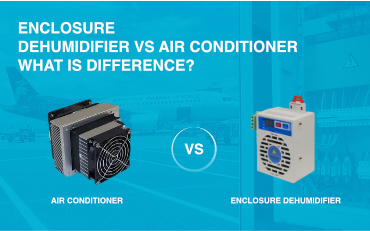
Electrical Enclosure Dehumidifier vs Air conditioner – What Is Difference?
Enclosure dehumidifier vs air conditioner – is a dehumidifier
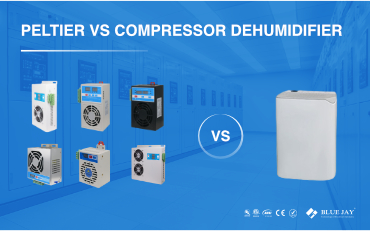
Peltier vs Compressor Dehumidifier is a critical comparison, while you selecting dehumidification technology for different applications. These two types of dehumidifiers differ significantly in their working principles, efficiency, and suitability for various environments. While compressor-based dehumidifiers dominate industrial and high-capacity applications, Peltier dehumidifiers provide a compact and quieter alternative for small-scale use. This article examines their fundamental differences, advantages, disadvantages, and typical applications.
Peltier Dehumidification (Thermoelectric Cooling)
Peltier dehumidifiers operate based on the thermoelectric effect. When an electric current passes through a Peltier module, it creates a temperature differential—one side becomes cold, and the other heats up. Moist air contacts the cold surface, causing water vapor to condense and collect in a reservoir. The heat generated on the opposite side is dissipated using a heat sink and fan.
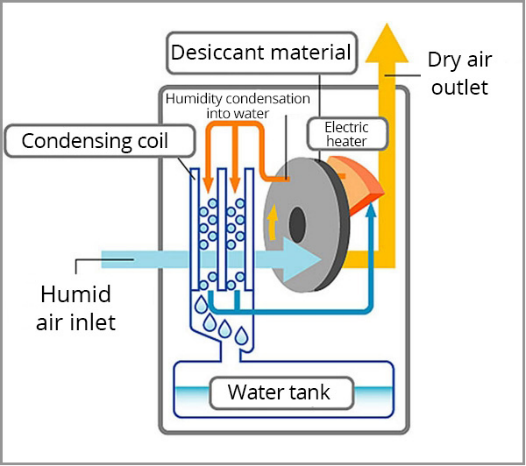
Compressor-Based Dehumidification (Refrigeration Cycle)
Compressor dehumidifiers, also called condensing dehumidifiers, work by using a refrigeration cycle, much like an air conditioner. They have two main coils: an evaporator and a condenser. A fan pulls humid air across the cold evaporator coil, which is chilled to a temperature below the air’s dew point. This causes the moisture in the air to condense into water droplets, similar to how condensation forms on a cold glass. These droplets then collect and drain away. Before the now-dried air is released back into the room, it passes over the condenser coil, which warms it up a bit. This process lowers the overall humidity in the space.
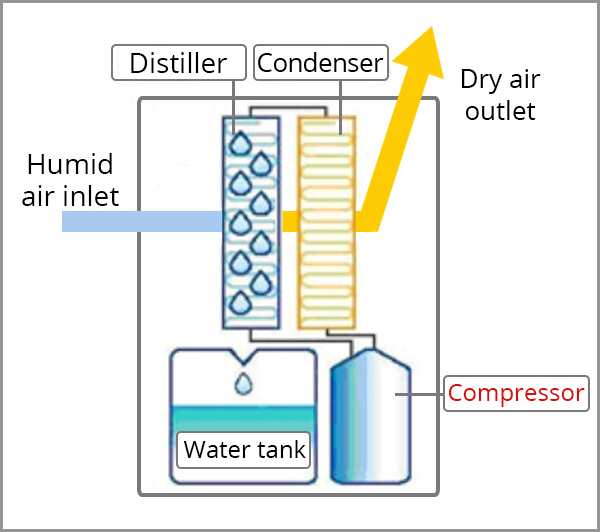
Key characteristics of Peltier dehumidification
Key characteristics of Condensing dehumidifier

| Feature | Peltier Dehumidifier | Compressor Dehumidifier |
| Energy Efficiency | Low power consumption but limited moisture removal | More energy-efficient for large-scale dehumidification |
| Moisture Removal Rate | Limited capacity (0.3-1L/day) | High capacity (10-50L/day) |
| Operating Temperature | Effective in warm environments (15-30°C) | Performs well in temperatures above 10°C but less effective in cold conditions |
| Noise Level | Near-silent due to lack of mechanical components | Moderate noise from compressor and fan |
| Size & Portability | Compact, lightweight, and easy to transport | Larger and heavier due to compressor and coil system |
| Maintenance | Minimal maintenance required | Requires filter cleaning and refrigerant management |
| Durability & Lifespan | Long lifespan with fewer mechanical failures | Subject to wear and tear of compressor components |
Peltier Dehumidifiers application
Compressor Dehumidifiers applications
Both Peltier and compressor-based dehumidifiers offer unique advantages, depending on the intended application. Peltier dehumidifiers provide a compact, quiet, and energy-efficient solution for small spaces with moderate humidity levels, while compressor dehumidifiers deliver powerful moisture removal, making them suitable for larger industrial and residential settings. Choosing the right dehumidification technology requires balancing efficiency, capacity, noise levels, and maintenance needs to ensure optimal performance.

Enclosure dehumidifier vs air conditioner – is a dehumidifier
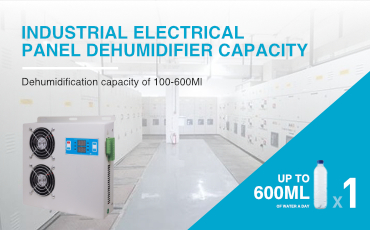
Dehumidifier capacity is an important factor when you choose
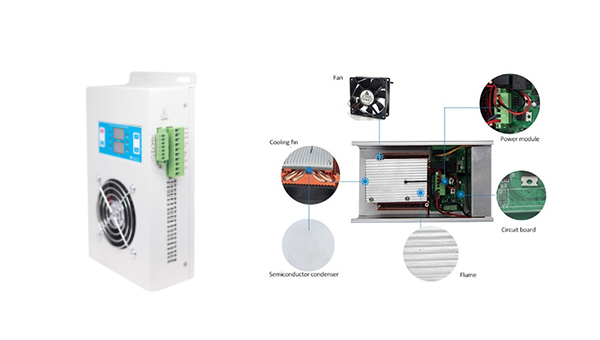
Do you know the electric cabinet dehumidifier construction? This




